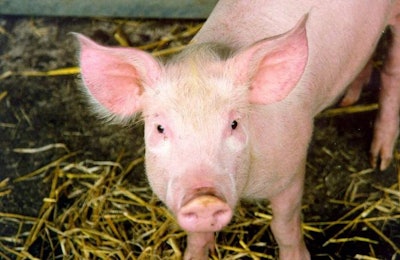
Three National Pork Board officers and two members of the senior leadership team have returned from a trip to Asia that was planned with hopes of getting a better feel for pork trade with Asia.
The team toured both China and Japan; they returned to the states on the September 16 after a nine-day stay. The trip included time with pork processors, distributors and retailers, as well as importers and traders. The Pork Checkoff Board officers also met with the Asian team members of the U.S. Meat Export Federation (USMEF).
National Pork Board CEO Bill Even explained the importance for the U.S. to understand various aspects of the Asian swine industry, including how pork is raised, processed and marketed he explained in a press release from Pork Checkoff. “The Asian customer and consumer culture is unique and we need to understand the global motivation to purchase U.S. pork,” said Even.
While the U.S. is on its way to producing higher numbers of pork than ever in 2017, it has become more important for U.S. producers and swine production businesses to understand the growing demand in other countries. In terms of total exports of U.S. pork in pounds, China/Hong Kong and Japan are currently the second and third largest buyers of U.S. pork, importing about 1.18 billion pounds. Financially, this is huge for the U.S. pork market as these Asian countries take about 1.6 billion dollars’ worth of U.S. pork, according to numbers through July from the USMEF, referenced by the Pork Checkoff press release.
During the members’ time in Japan, they had the opportunity to see how U.S. pork is marketed. “My most distinct takeaway as a producer is the vital and versatile role that U.S. pork plays in the Asian diet. No matter the level of retail outlet in Japan, U.S. pork was present,” Pork Board Treasurer Brett Kaysen, a producer from Nunn, Colorado, said in the press release.
Chinese market
Steve Rommereim, National Pork Board vice president and South Dakota swine producer, discussed the U.S. need to reach out to China. China by itself is 98 percent self-sufficient in pork production. “The economic growth and infrastructure development we saw in China is intimidating, to say the least,” he said.
This may create a need for better marketing practices specifically in China. According to the USDA, China has produced nearly half of the world’s pork since 2013. That’s roughly 55 billion bounds per year. Although total pig numbers did force China to import pork in previous years, recent data suggests that imports have fallen 52 percent from a year ago.
Chinese imports of U.S. pork may also see a hit due to competition from other countries. Earlier this summer Department of Agriculture, Environment and Rural Affairs (DAERA) Chief Veterinary Officer, Robert Huey, on August 11, welcomed news that Northern Ireland received final approval to export pork to China. Russia also has plans of exporting more pork and poultry to China before the end of 2017.















